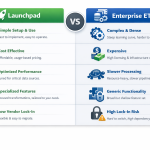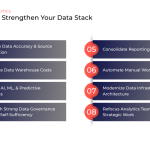
Linear regression is a simple yet powerful algorithm in machine learning that is used for predictive modeling. For example, these models help marketers predict the returns they can expect if they increase advertising spend. Linear regression impacts nearly every industry, from finance and marketing to healthcare and real estate.
Understanding linear regression not only can help your business, but it also forms a foundation for understanding more complex algorithms. In this blog we'll dig into some of the fundamentals of linear regression, explore its uses, and demonstrate how to visualize results on a dashboard.
So What Is Linear Regression?
Linear regression is a statistical method used to model the relationship between a dependent variable and one or more independent variables. It assumes a linear relationship between the input variables and the output (i.e., when your variables are related linearly). In the marketing example from earlier, the dependent variable is the ad performance (what you're measuring) and the independent variable is the ad spend (what you're changing).
There are two forms of linear regression: simple linear regression, which involves one independent variable, and multiple linear regression, which involves more than one independent variable.
The Assumptions of Linear Regression
There are four main assumptions regarding linear regression:

- Linearity: There should be a linear relationship between the independent and dependent variables (y and each X).
- Independence: The residuals should be independent of each other.
- Homoscedasticity: The variance of residuals should be constant across all levels of the independent variables.
- Normality: The residuals should be normally distributed (normal error distribution).
Practical Use Cases of Linear Regression
Many major industries rely on linear regression models to predict future outcomes.
- Predicting sales: Sales are predicted based on advertising expenditure, seasonality, and other factors.
- Housing price prediction: House prices are predicted based on features like location, size, and number of bedrooms.
- Financial forecasting: Stock prices are predicted based on historical data and market indicators.
- Medical diagnosis: Disease progression is predicted based on patient demographics and health indicators.
Dashboarding and Visualizing Linear Regression
To create a dashboard that visualizes linear regression data correctly, you'll first need to collect, clean, and prepare the data (Launchpad can help with this part) and ensure that your machine learning models are trained and evaluated:
- Data preparation: Clean and preprocess the data, handle missing values, and encode categorical variables if necessary.
- Model training: Train the linear regression model using the training dataset.
- Model evaluation: Evaluate the model using metrics like R-squared, mean squared error (MSE), and root mean squared error (RMSE).
- Dashboard creation: Use dashboarding tools or programming libraries to create visualizations of the model results.
- Deployment: Deploy the dashboard for stakeholders to interact with and gain insights.
Visualization tools like our own Launchpad Viz, Tableau, Power BI, Google's Looker Data Studio, and others can be used to create interactive dashboards for visualizing linear regression results.
The following types of visualizations work best when trying to display linear regression to users in ways that are intuitive and make sense:
- Regression line: This visualization shows the line of best fit generated by the model.
- Predicted vs. actual line plot: This visualization allows predicted values to be easily compared with actual values to assess model performance.
- Scatter plot: This visualization can help to visualize the relationship between independent and dependent variables.
- Residual plot: This visualization shows the distribution of residuals to check for outliers.
Need Help With Predictive Analytics?
Linear regression is a useful and versatile technique in machine learning that can be applied to numerous domains for predictive analytics. By understanding its fundamentals and being able to properly visualize its results, Calibrate Analytic is able to provide you with valuable insights for decision-making and problem-solving.
Our team excels at integrating predictive analytics, machine learning, and other advanced functionalities into your stack, helping you fully leverage your data to gain a competitive edge.





